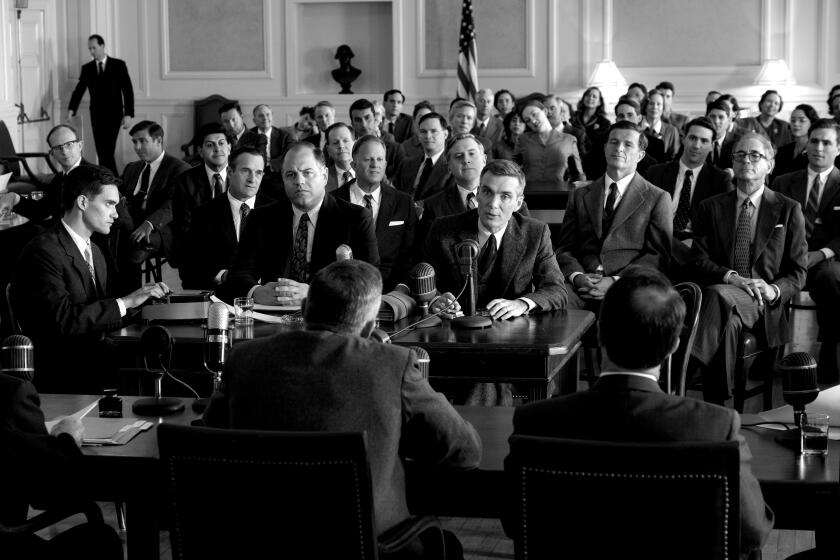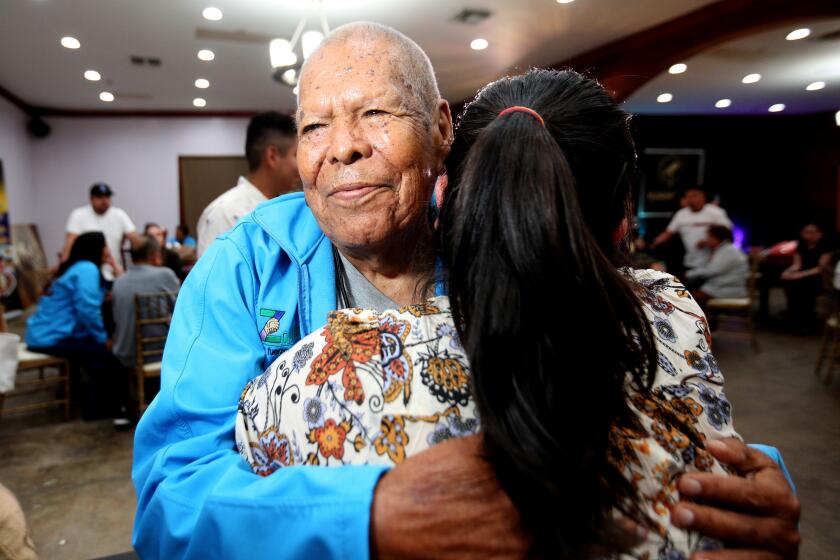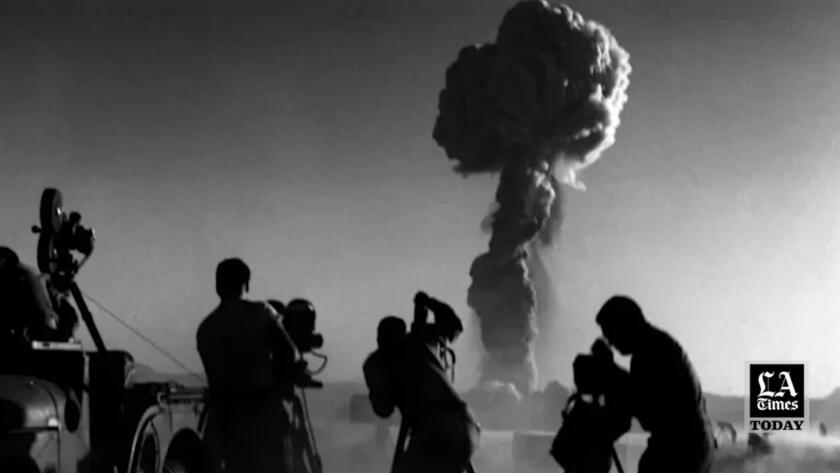
- Share via
In the course of a single afternoon in 2017, the whole of Paul Pino’s life clicked. At a meeting of the Tularosa Basin Downwinders Consortium, Pino thought about the people he’d lost, the family members he’d mourned — his mother, who died of bone cancer, his brother who died of stomach cancer, and his sister who died of thyroid cancer — and as he listened to the consortium’s two-hour presentation, tears streamed down his face, and his grief turned into anger.
Pino is one of hundreds of thousands of people known as “downwinders” — those living in the fallout zone of nuclear test sites, exposed to high levels of radiation that increase the risk of cancer. While downwinder communities span several states including Arizona, Nevada, Oregon and Idaho, as a result of decades of nuclear weapons testing, the people of New Mexico were the first victims of the atomic bomb, the result of the Manhattan Project’s Trinity Test on July 16, 1945 — less than a month before the bombings of Hiroshima and Nagasaki.
“Learning the truth made me vow to fight for justice in the memory of my family,” Pino said.
“Oppenheimer,” the massive blockbuster biopic of J. Robert Oppenheimer, “the father of the atomic bomb,” has sparked renewed interest in the dawn of the Atomic Age and prompted conversations about its decision not to depict the communities that bore the brunt of the fallout.
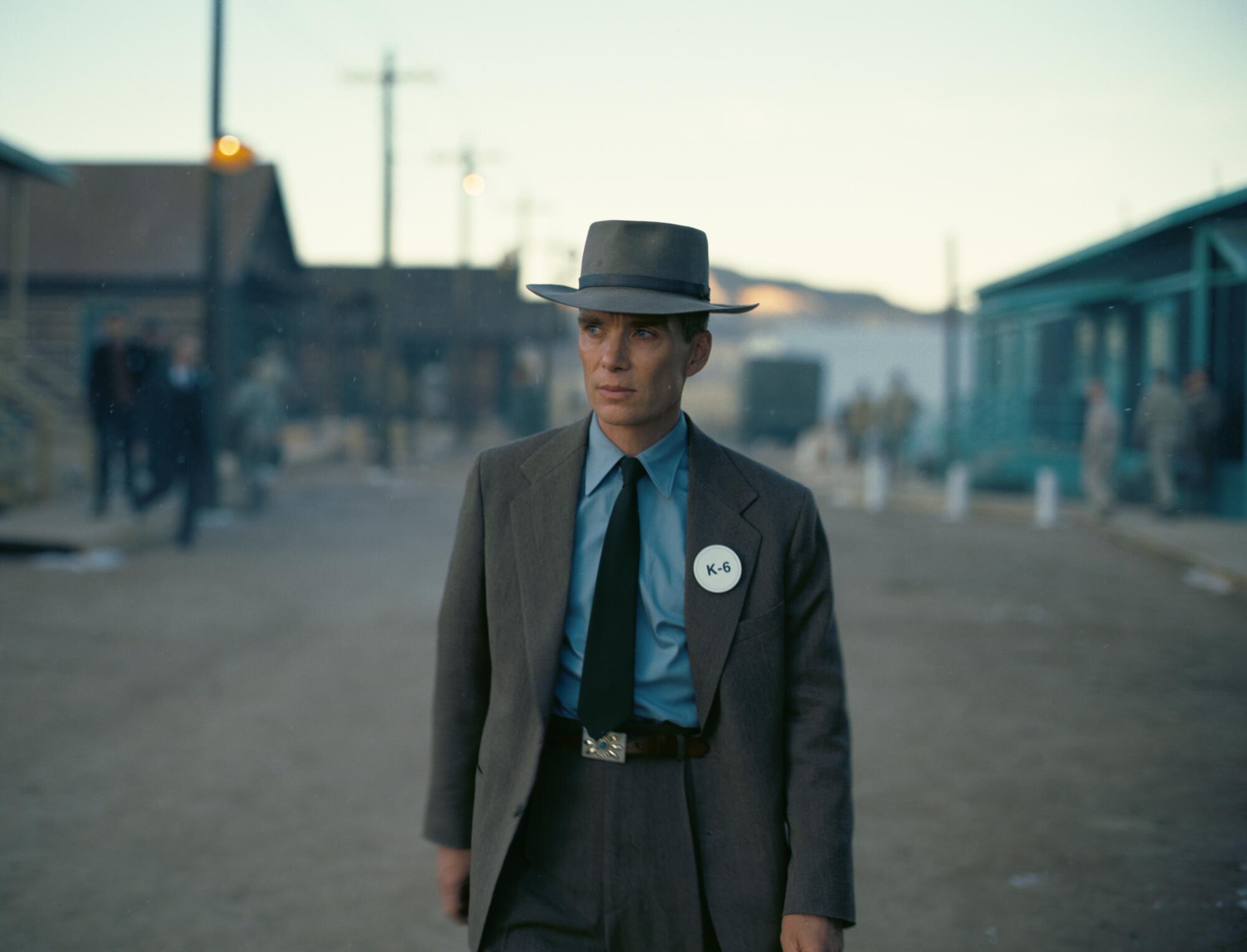
Tina Cordova, founder of TBDC, is hoping that increased interest in Oppenheimer and the atomic bomb will cast a spotlight on the group’s fight for recognition. “We were a sacrifice to our country’s quest for nuclear superiority,” Cordova said. “They spread more than ten pounds of plutonium across the Tularosa Basin. Our government has never come back to sort out what happened to us. We’re just collateral damage.”
Starring Cillian Murphy in the title role as the architect of the Manhattan Project, the historical drama also features Florence Pugh and Robert Downey Jr.
In the film, both the test site and the Los Alamos Laboratory in Northern New Mexico are remote, unpopulated areas — a depiction that’s largely in line with most historical accounts of the Manhattan Project. The reality is starkly different. The land acquired by the U.S. government to build and test the bomb was occupied, as was the 150-mile radius surrounding the Trinity Test — areas settled predominantly by Hispanic and Native American ranchers and homesteaders.
“There are some glaring omissions,” Cordova said of the film. “There was a level of racism, obviously [to the Manhattan Project]. They so easily invaded our lands, our lives, and destroyed them both.”
The residents who remained in the surrounding area were given no warning about the Trinity Test, with Manhattan Project leader Gen. Leslie R. Groves insisting that anything surrounding the operations remain a closely guarded secret.
First-person accounts from locals describe seeing an intense flash of light in the early morning of July 16. “I thought the world [was] coming to an end,” reads the written testimony of Henry Herrera, a downwinder who was 11 years old at the time of the blast. Dirt, dust and debris coated everything around him. “This filth landed all over our town, covered our village with radiation … everything we consumed was filled with radiation.”
The official explanation for the blast was an explosion of ammunition at the nearby Alamogordo Air Base. Even after the bombs were dropped on Hiroshima and Nagasaki the following month, and New Mexico residents realized the truth, there were no outreach efforts from the U.S. government or from the scientists at the Manhattan Project to explain or monitor the aftermath of the explosion.
In the ensuing decades, the bomb became part of their history. Cordova still remembers a conversation with her grandmother about the morning the bomb was dropped. “It woke them up,” she said. “ But she told me the worst part was the ash kept falling from the sky. She kept sweeping and dusting, sweeping and dusting, but it kept coming for days. Imagine you have no form of communication, no telephones, no TVs, a sparse radio here and there, and a newspaper that printed only occasionally, so there’s no way to know what happened.”
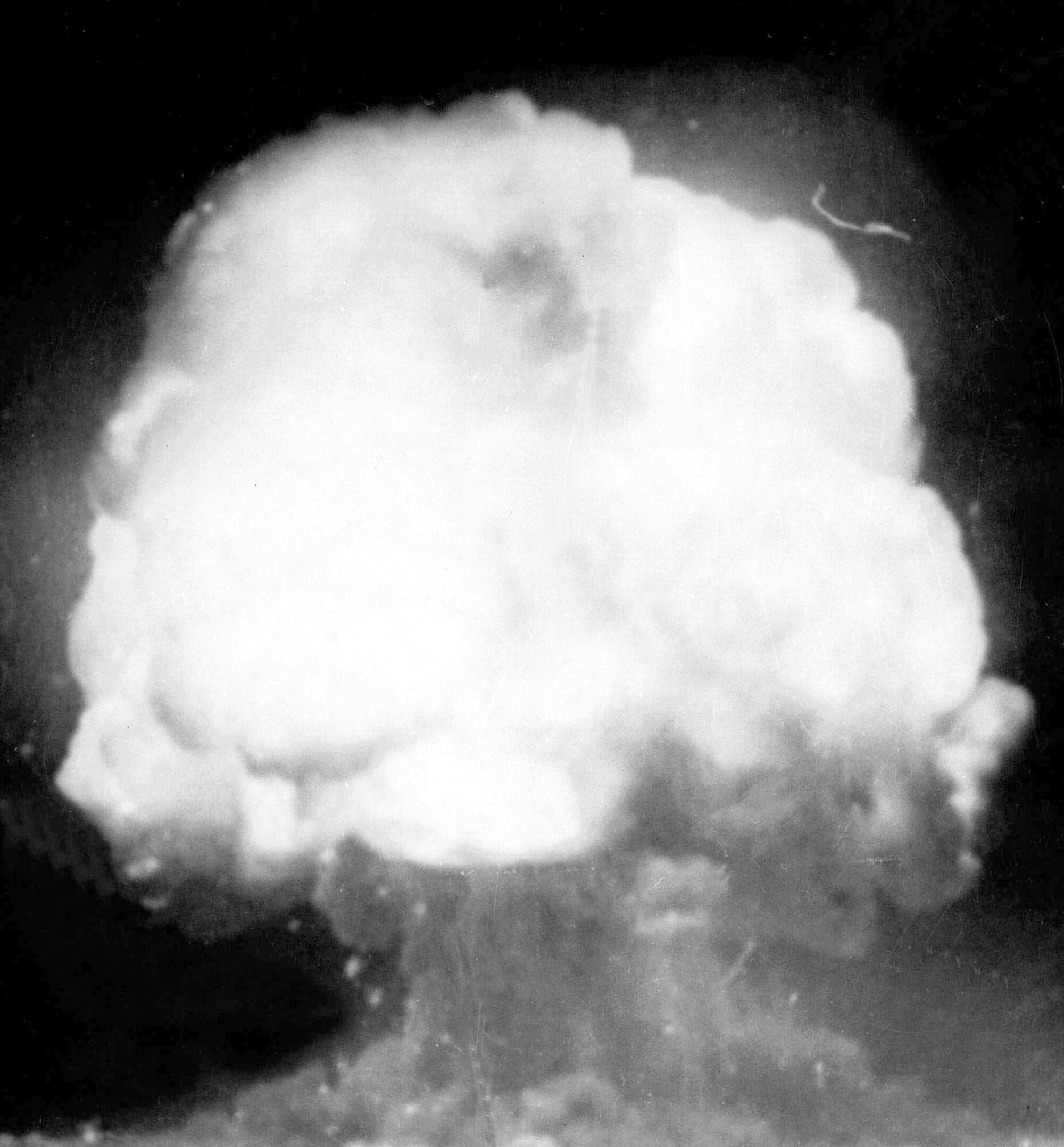
Nearly fifty years later, the 1990 Radiation Exposure Compensation Act was passed to provide a one-time payment of $50,000 to $100,000 for nuclear workers and downwinders who lived and worked near the Nevada nuclear test site established in 1950.
To date, the Trinity downwinders remain ineligible for financial compensation.
For Cordova, the ethnic makeup of Los Alamos and the White Sands testing site is central to why they were chosen, and how the downwinders have been treated since. “We were the first people ever exposed to radiation as the result of an atomic bomb, and most of us were Hispanos and Native Americans,” she said. “In the 1940s, they depended on us to be uneducated, unsophisticated, and unable to stand up for ourselves. We’re not those people any longer.”
How Barbies became a critical piece in the Latino immigrant experience.
As radiation contaminated the air, water and soil throughout the Tularosa Basin, cancer became a reality — as predictable as New Mexico’s yearly monsoons. “We don’t ask if we’re going to get cancer, we ask when,” Cordova said. “In my own family, just look at the level of loss my mom experienced. She lost my dad, her sister, her mother, a sister-in-law. I had cancer myself. Imagine the trauma associated with that, and that’s what we live with every day.”
For Mary Martinez White, a Tularosa native, her journey from understanding the truth of the bomb to learning its effect on her own family has been difficult to process. “It was unnerving to know that the federal government did this and turned their backs on us,” White said. “My family is very patriotic. My dad, my brothers, my nieces and nephews have served in the military. I want to believe in this country, and I believe that they still have an opportunity to make this right.”
Since its founding, TBDC has worked to gain a clearer understanding of the bomb’s impact through outreach, educational initiatives and community health surveys. Most families they speak with have lost one or more relatives to cancer, and many of them experience debt as a result of costly hospital bills and limited access to adequate medical care. “I hear it everywhere I go,” Cordova said. “We don’t have the same opportunities to develop generational wealth, people have to file for bankruptcy, and it destroys families.”
Two groups worked to bring elderly Mexican nationals to reunite with family members they hadn’t seen in decades.
Recently, TBDC received grant money to work with educators in New Mexico to establish a curriculum that includes the downwinders. “If you don’t address the entire history, then you’re essentially perpetuating a lie. And the idea that no one lived here and no one was harmed is a lie.”
That sentiment is why Cordova and the other Trinity downwinders were initially hopeful when they heard about “Oppenheimer.”

Cordova said the group tried to get in contact with the filmmakers while they were shooting in New Mexico but was told that there wasn’t interest in meeting with them. “All we wanted was a panel at the end of the movie to acknowledge the sacrifice and suffering of the people of New Mexico as part of the Manhattan Project,” she said.
Next year, RECA is set to expire unless it’s extended, threatening the passage of Senate Bill 1751 — a proposed amendment to extend the scope of RECA to include the Trinity downwinders and others. While the U.S. government estimates that the expansion would cost roughly $5 billion, advocates like TBDC argue that that’s only a fraction of the cost the country continues to pay to maintain its nuclear arsenal.
Cordova’s continued persistence for their cause boils down to one simple fact: “Once you know this history, you can’t stay silent.”
Cat Cardenas is a Latina writer and photographer based in Austin. Her work has appeared in Rolling Stone, New York Magazine, Harper’s Bazaar, GQ and others.
- Share via
Watch L.A. Times Today at 7 p.m. on Spectrum News 1 on Channel 1 or live stream on the Spectrum News App. Palos Verdes Peninsula and Orange County viewers can watch on Cox Systems on channel 99.
More to Read
The Latinx experience chronicled
Get the Latinx Files newsletter for stories that capture the multitudes within our communities.
You may occasionally receive promotional content from the Los Angeles Times.

